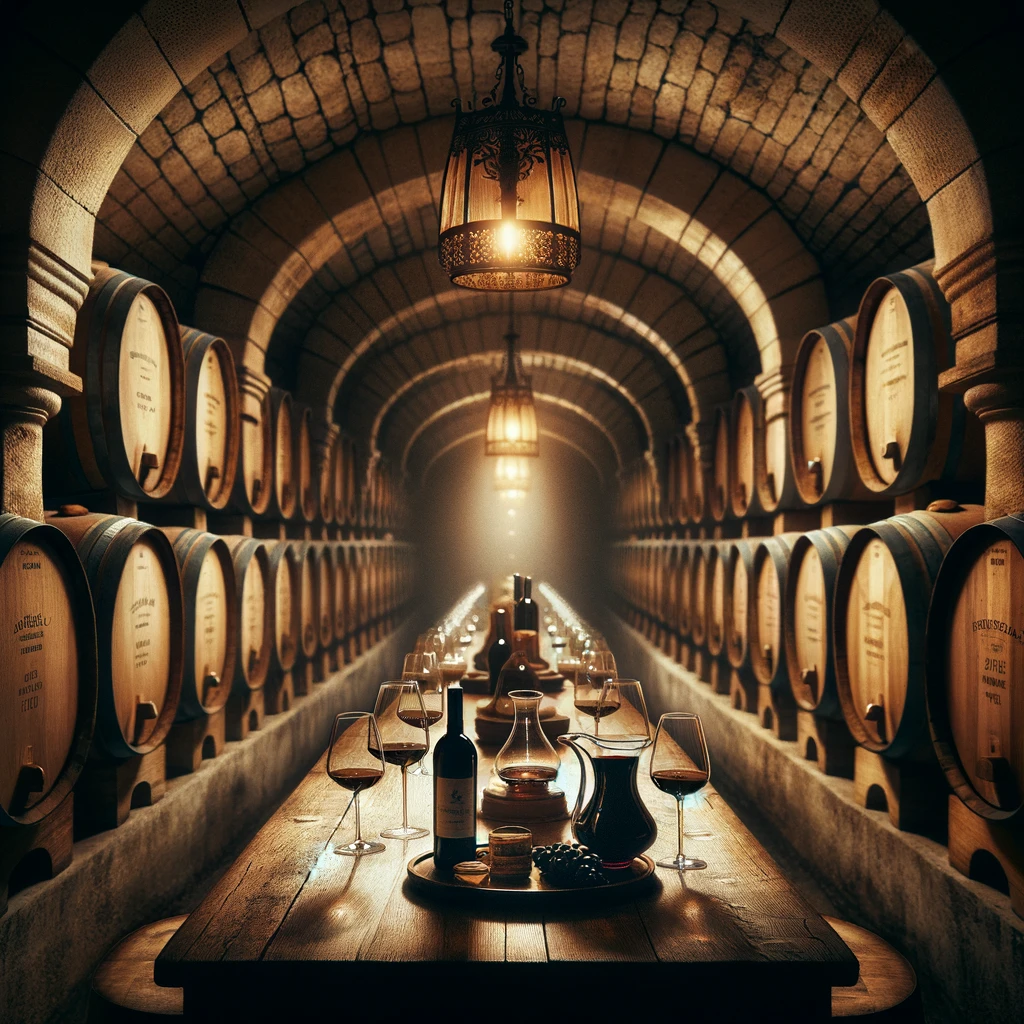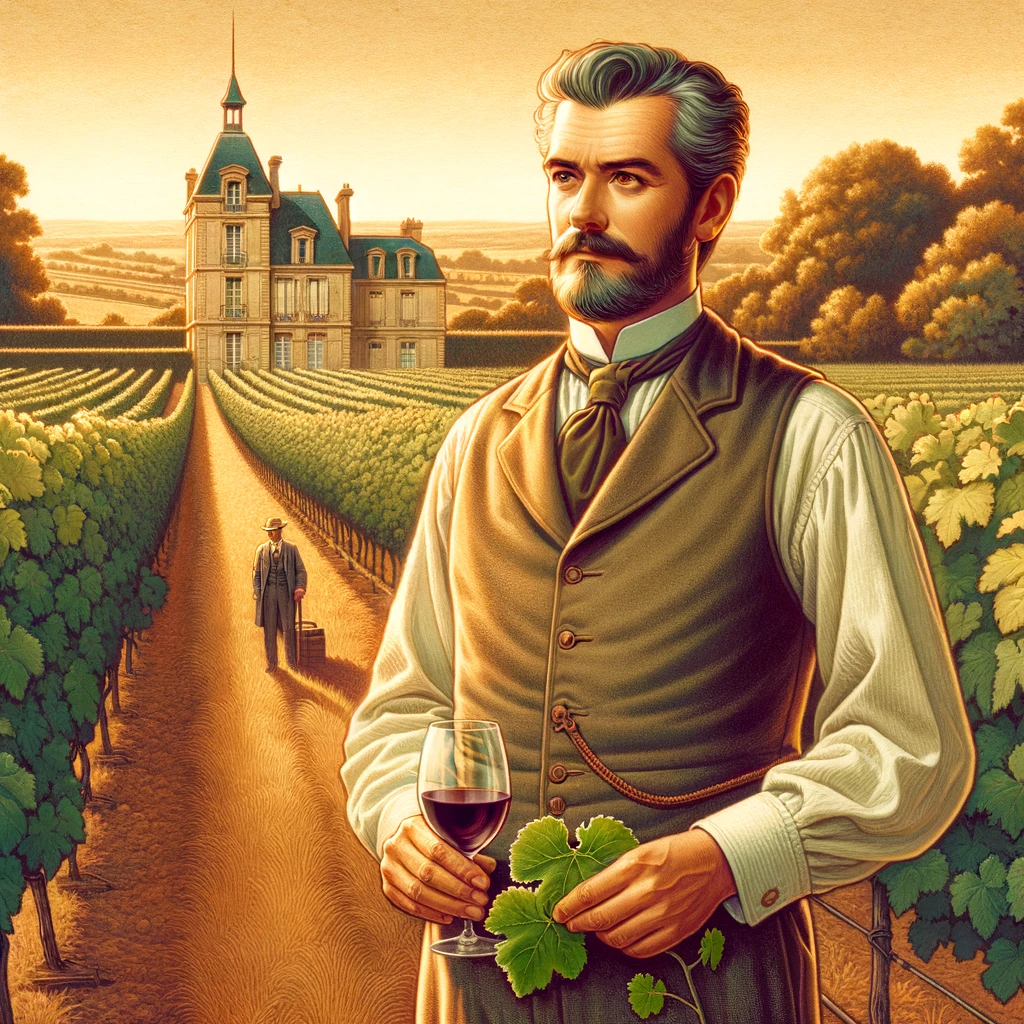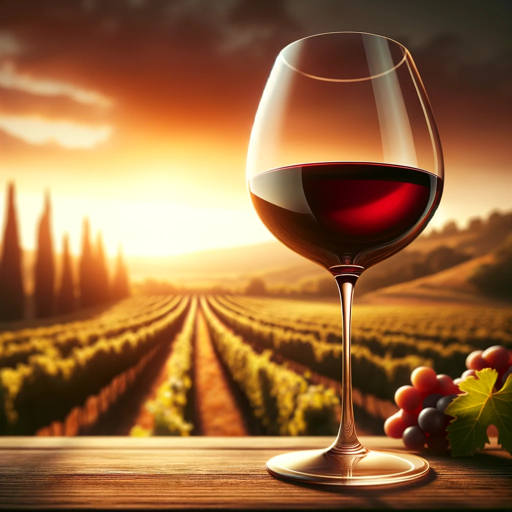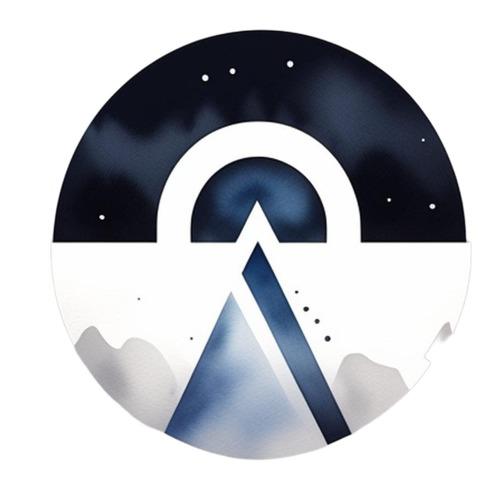
From Vine to Vintage Explores the Richness of Bordeaux’s Terroir and Tradition
Our enriching journey through the world of Bordeaux wines from Vine to Vintage. Let us explore the Richness of Bordeaux’s Terroir and Tradition. A deep dive into the region’s history, winemaking philosophies, renowned châteaux, and the intricate map of its varied terroirs. With… a festive menu on top of it!
The history of Bordeaux wines
Ah, the story of Bordeaux wines – it’s a captivating tale steeped in history and tradition. Bordeaux, a region in southwest France, has been synonymous with wine for centuries, its roots in winemaking stretching back to the Roman times. However, the real transformation of Bordeaux into a wine powerhouse began in the 12th century, when the region was under English rule.
This period marked the start of a flourishing wine trade between Bordeaux and England. The marriage of Henry Plantagenet (later King Henry II of England) and Eleanor of Aquitaine in 1152 significantly boosted this trade, as Bordeaux wines became a favorite in the English court. The wine from this region was known as “Claret” in England, a term still used there today for red Bordeaux wine.
The 17th and 18th centuries saw further development. Dutch traders played a key role, draining the marshy Médoc region, which revealed excellent terroir for growing vines. This led to the establishment of many of the famous Bordeaux estates we know today. The 1855 Classification, commissioned by Emperor Napoleon III for the Paris Exposition, officially recognized the top estates, categorizing them into ‘Growths’ (or ‘Crus’) based on reputation and price.
Bordeaux wine production, like many others, faced challenges over the years, including the devastation caused by the phylloxera pest in the late 19th century and the economic difficulties brought by the World Wars.
Today, Bordeaux is one of the most renowned wine regions in the world, known for its prestigious châteaux and its complex, age-worthy red wines primarily made from Cabernet Sauvignon and Merlot. The region also produces superb white wines, both dry and sweet, such as those from Pessac-Léognan and Sauternes.
The elegance, history, and diversity of Bordeaux wines continue to captivate wine enthusiasts around the globe, making it a cornerstone of the wine world.
The grape varieties of the Bordeaux wines
Let’s delve into the grape varieties that make Bordeaux wines so distinctive and celebrated.
Red Bordeaux Wines
The red wines of Bordeaux are typically blends, with the most prominent grapes being Cabernet Sauvignon and Merlot. Cabernet Sauvignon, known for its deep color, complex aromatics, and potential for aging, thrives in the gravelly soils of the Left Bank, especially in areas like Médoc and Graves. Merlot, on the other hand, is more predominant on the Right Bank in regions like Saint-Émilion and Pomerol. It’s appreciated for its softer tannins and approachable fruitiness, making wines that are often drinkable at a younger age compared to Cabernet Sauvignon.
Other grapes used in red Bordeaux blends include Cabernet Franc, which adds finesse and a touch of spice and floral notes; Petit Verdot, offering color, structure, and a hint of violet; and Malbec, which is less common but contributes color and complexity. Each grape variety contributes its unique qualities, creating the harmonious balance that Bordeaux wines are known for.
Rosé Bordeaux Wines
Rosé from Bordeaux is less well-known but delightful. These are usually made from the same grape varieties as red Bordeaux wines, primarily Merlot and Cabernet Sauvignon. The rosés are produced by limiting the contact time between the grape skins and juice, resulting in a wine that combines the fruitiness of red grapes with the freshness of a white wine.
White Bordeaux Wines
White Bordeaux wines are predominantly made from Sauvignon Blanc and Sémillon. Sauvignon Blanc brings zestiness and crisp acidity, often with notes of citrus and green fruits, while Sémillon offers body and richness, contributing flavors of stone fruits and honey. In dry white Bordeaux wines, these varieties are often blended, balancing the vivacity of Sauvignon Blanc with the fuller body of Sémillon.
In the sweet wines of regions like Sauternes and Barsac, the same varieties are affected by ‘noble rot’ (Botrytis cinerea), concentrating their sugars and flavors to produce some of the world’s most exquisite and long-lived sweet wines.
Each Bordeaux wine, whether red, rosé, or white, is a reflection of its terroir and the artful blend of its grape varieties, making them a fascinating subject for any wine enthusiast.
The Crémant de Bordeaux
In Bordeaux, while the focus is predominantly on still wines (both red and white), there is indeed a production of sparkling wines, although it’s much less prominent compared to the world-renowned Champagne region.
The sparkling wines from Bordeaux are known as “Crémant de Bordeaux.” These wines are produced using the traditional method, also known as “méthode champenoise” in Champagne. This method involves a secondary fermentation in the bottle, which is the same process used to make Champagne. It’s this secondary fermentation that creates the bubbles characteristic of sparkling wines.
Crémant de Bordeaux can be both white and rosé. For white Crémant, the grapes used are typically the same as those for white Bordeaux wines, mainly Sémillon, Sauvignon Blanc, and sometimes Muscadelle. For rosé, it’s often Merlot and Cabernet Franc. These wines are known for their fine bubbles, freshness, and often more approachable price point compared to Champagne.
While not as internationally renowned as Champagne or even as prominent as other French Crémants (like Crémant d’Alsace or Crémant de Loire), Crémant de Bordeaux offers a delightful and elegant sparkling wine experience, showcasing yet another facet of this versatile wine region.

The most illustrious and prestigious wine estates, or “châteaux,” in the world
Bordeaux is home to some of the most illustrious and prestigious wine estates, or “châteaux,” in the world. The fame of these châteaux is rooted in their history, terroir, and the exceptional quality of their wines.
A glimpse into some of the most renowned wine estates:
- Château Lafite Rothschild (Pauillac, Médoc): Part of the First Growth (Premier Cru) estates from the 1855 Classification, Lafite Rothschild is known for producing some of the most sought-after and expensive wines in the world. Its wines are celebrated for their elegance, complexity, and aging potential.
- Château Margaux (Margaux, Médoc): Another First Growth estate, Château Margaux is renowned for its perfumed, elegant wines that embody the quintessence of the Margaux appellation. The château itself is also architecturally significant, with a neoclassical façade.
- Château Latour (Pauillac, Médoc): This First Growth estate is famous for its powerful, full-bodied wines that are made to age. Château Latour’s Grand Vin is a benchmark for the Pauillac appellation, with its robust structure and depth.
- Château Mouton Rothschild (Pauillac, Médoc): Initially classified as a Second Growth, Mouton Rothschild was elevated to First Growth status in 1973, a testament to its quality. Known for its opulent and richly flavored wines, the estate is also famous for its labels, each year featuring artwork by a famous artist.
- Château Haut-Brion (Pessac-Léognan, Graves): The only First Growth located outside of Médoc, in the Graves region, Haut-Brion is known for both its red and white wines. Its reds are rich, with a unique smokiness, while the whites are among the most prestigious in Bordeaux.
- Château Pétrus (Pomerol): Though not part of the 1855 Classification (as it only applied to Médoc and Sauternes), Pétrus is one of the most prestigious and expensive wines globally. Dominated by Merlot, its wines are celebrated for their richness, depth, and longevity.
- Château d’Yquem (Sauternes): The only Premier Cru Supérieur (Superior First Growth) in the 1855 Classification, Château d’Yquem produces what is often considered the world’s greatest sweet wine. Made from Sémillon and Sauvignon Blanc affected by noble rot, these wines are known for their complexity, concentration, and remarkable aging potential.
Each of these châteaux has its unique story, terroir, and winemaking philosophy, contributing to the rich tapestry of Bordeaux’s wine heritage. Their wines are not just beverages but symbols of history, craftsmanship, and the pursuit of excellence in winemaking.
Bordeaux’s winemaking philosophy
Bordeaux’s winemaking philosophy is a fascinating blend of tradition, terroir, innovation, and a relentless pursuit of excellence. This philosophy is deeply ingrained in the region’s approach to viticulture and winemaking, shaping the character and reputation of Bordeaux wines.
Terroir-Driven Approach
Bordeaux winemakers place a strong emphasis on terroir — the unique combination of soil, climate, and topography where the vines are grown. The concept of terroir is central to understanding Bordeaux wines, as it significantly influences the flavor and character of the wine. The region’s diverse soils, ranging from gravel, clay, sand, to limestone, play a crucial role in determining the style and profile of the wines.
Blend of Tradition and Innovation
While Bordeaux is steeped in history and tradition, winemakers are not averse to innovation. The region combines time-honored techniques with modern technology. This includes everything from meticulous hand-picking of grapes to advanced wine-making methods and state-of-the-art facilities. The goal is to preserve the best of traditional practices while embracing advancements that can enhance the quality of the wine.
Art of Blending
Bordeaux is renowned for its skill in blending different grape varieties. This is a critical aspect of their winemaking philosophy. The art of blending — combining different grapes like Cabernet Sauvignon, Merlot, Cabernet Franc, and others for reds, and Sauvignon Blanc, Sémillon for whites — allows winemakers to craft balanced and complex wines. Each grape variety contributes its own characteristics, and the skillful blend leads to wines that are greater than the sum of their parts.
Aging and Maturation
Many Bordeaux wines, especially those from prestigious châteaux, are designed to age and mature over many years. The region is known for its use of oak barrels for aging, which contributes to the wine’s flavor, structure, and longevity. The choice of oak (French or American), the duration of aging, and the proportion of new versus old barrels are carefully considered to complement the wine’s profile.
Focus on Quality and Classification
Bordeaux winemakers are deeply committed to quality. This is exemplified by the various classification systems, like the 1855 Classification for Médoc and the classifications for Saint-Émilion and Graves. These systems, while historic, reflect a dedication to quality and prestige, helping guide consumers in understanding the hierarchy and reputation of various estates.
Environmental Responsibility
In recent years, there’s been an increasing shift towards sustainable, organic, and biodynamic practices in Bordeaux. Many estates are now focusing on reducing their environmental footprint, understanding that great wine starts with a healthy vineyard ecosystem.
In summary, Bordeaux’s winemaking philosophy is a harmonious blend of respect for tradition and terroir, combined with a forward-looking approach that embraces innovation and quality. This philosophy ensures that Bordeaux wines not only reflect their unique origins but also continue to evolve and maintain their place at the forefront of the global wine scene.
Is every château wine apt to age?
While Bordeaux is renowned for producing many wines with excellent aging potential, it’s not accurate to say that every wine from every Bordeaux château is suited for long-term aging. The aging potential of a Bordeaux wine depends on several factors, including the appellation, the vintage, the winemaking style of the château, and the quality of the specific wine.
- Appellation and Quality Tier: Wines from prestigious appellations and higher-quality tiers (like those from the classified growths or Grand Cru estates) are typically crafted with aging in mind. These wines often have a structure (tannins, acidity) and complexity that allow them to develop and improve over many years, even decades.
- Winemaking Style: The winemaking style and practices of each château play a crucial role. Wines made with a high proportion of grapes like Cabernet Sauvignon, which has more tannins, are generally more suitable for aging. The use of new oak barrels for aging also contributes to the wine’s longevity.
- Vintage Variation: The characteristics of the vintage also influence aging potential. Bordeaux, like all wine regions, experiences variation in weather from year to year, which affects the grapes and the resulting wine. Some vintages produce wines that are more robust and structured, ideal for aging, while others result in wines best enjoyed in their youth.
- Entry-Level and Regional Wines: Bordeaux also produces a significant amount of more affordable, entry-level wines. These wines, often labeled simply as “Bordeaux AOC” or “Bordeaux Supérieur,” are generally intended for consumption within a few years of release. They are typically more approachable and fruit-forward, with less emphasis on structure and tannins that are key to long-term aging.
In conclusion, while many Bordeaux wines, especially those from well-known châteaux and excellent vintages, are indeed crafted for aging, it’s not a blanket rule for all Bordeaux wines. As with any wine region, Bordeaux offers a spectrum of wines, some ideal for aging and others designed for earlier consumption. For anyone interested in cellaring Bordeaux wines, it’s important to consider the specific château, appellation, vintage, and wine style to gauge its aging potential.

The Bordeaux’s terroirs
Bordeaux’s terroir is a rich tapestry that significantly influences the character of its wines. Let’s delve into the key elements that define the region’s diverse terroirs:
Left Bank (Médoc and Graves)
Soil: Dominated by gravelly soils, which are excellent for growing Cabernet Sauvignon. The gravel provides good drainage, forcing the vines to grow deep roots, which contributes to the complexity of the wines.
Climate: The Atlantic Ocean and the Gironde estuary moderate the climate, providing a steady temperature that is crucial for grape growing.
Notable Appellations: Includes prestigious appellations like Pauillac, Margaux, Saint-Julien, and Saint-Estèphe, known for powerful, structured reds, and Pessac-Léognan for both reds and high-quality dry whites.
Wine Characteristics: Wines here are typically Cabernet Sauvignon-dominant blends, known for their deep color, high tannins, and flavors of dark fruits, often with cedar and earthy notes.
Right Bank (Saint-Émilion, Pomerol, and others)
Soil: More varied but largely dominated by clay and limestone. The clay is particularly suited to Merlot, which is the predominant grape here.
Climate: Slightly warmer than the Left Bank, which is ideal for Merlot and Cabernet Franc.
Notable Appellations: Saint-Émilion and Pomerol are the most famous, with châteaux like Pétrus and Cheval Blanc.
Wine Characteristics: The wines are typically Merlot-dominant, resulting in a plusher, more velvety texture with flavors of plum, blackberry, and often a hint of spice.
Entre-Deux-Mers
Soil: A mix of clay, limestone, and gravel. The region is more known for its white wines.
Climate: Mild with a good balance of sun and rain, conducive for white grape varieties.
Wine Characteristics: Predominantly white wines made from Sauvignon Blanc, Sémillon, and Muscadelle, offering crisp acidity, and fresh, floral, and fruity flavors.
Sauternes and Barsac
Soil: Features a unique combination of clay, limestone, and gravel, with a specific microclimate influenced by the Ciron River.
Climate: The mist from the Ciron River creates the perfect conditions for noble rot (Botrytis cinerea), essential for the region’s sweet wines.
Wine Characteristics: These are lusciously sweet wines, with rich, concentrated flavors of apricot, honey, and nuts, with a balancing acidity. Château d’Yquem is a legendary producer in this area.
Environmental Factors: The proximity to the Atlantic Ocean and various rivers, including the Gironde, Dordogne, and Garonne, significantly impacts the climate and vine growth, contributing to the distinct terroir expressions in Bordeaux.
Each area within Bordeaux has its unique combination of soil, climate, and topography, contributing to the diversity of wines produced in the region. This variety is what makes Bordeaux not only a fascinating region to study but also a treasure trove for wine enthusiasts seeking a range of styles and expressions.
Summarized table presenting the key aspects of Bordeaux’s main terroirs
| Region | Soil Types | Climate | Notable Appellations | Wine Characteristics |
| Left Bank | Gravel | Moderate, oceanic | Pauillac, Margaux, Saint-Julien, Saint-Estèphe, Pessac-Léognan | Cabernet Sauvignon-dominant, structured, dark fruit, cedar, earthy notes |
| Right Bank | Clay, Limestone | Slightly warmer, oceanic | Saint-Émilion, Pomerol | Merlot-dominant, velvety, plum, blackberry, spice |
| Entre-Deux-Mers | Clay, Limestone, Gravel | Mild, balanced | (Known for white wines) | Crisp white wines, Sauvignon Blanc, Sémillon, floral, fruity |
| Sauternes and Barsac | Clay, Limestone, Gravel | Microclimate with morning mist | Sauternes, Barsac | Sweet, Botrytis-affected, apricot, honey, nutty, balanced acidity |
This table provides a snapshot of the diversity and complexity of Bordeaux’s terroir, reflecting how the region’s soil, climate, and other environmental factors shape the distinctive styles and characteristics of its wines.
Starting a Bordeaux wine cellar
Starting a Bordeaux wine cellar is an exciting venture, especially considering the region’s reputation for wines that age gracefully. Proper storage is crucial to preserve the quality and character of the wines over time.
Key factors to consider for optimal wine storage:
- Temperature: Consistency is key. The ideal temperature range is between 12-14°C (55-57°F). Fluctuations can be harmful, so a stable environment is vital.
- Humidity: Aim for a humidity level around 60-70%. This range helps to keep corks in good condition, preventing them from drying out (which could lead to oxidation) or becoming too moist (which could lead to mold or label damage).
- Light: Wines should be stored away from direct sunlight, as UV rays can degrade and prematurely age wine. Incandescent or sodium vapor lights are better choices than fluorescent lighting, which emits a small amount of UV light.
- Vibration: Minimize vibration as much as possible. Constant movement can disturb the sediment in the bottle, potentially affecting the aging process and the eventual taste of the wine.
- Position: Store wine bottles horizontally. This keeps the liquid up against the cork, which should remain moist to prevent it from drying out and allowing air into the bottle.
- Ventilation: Good air circulation helps prevent mold growth and musty odors from contaminating the wine’s flavor. However, ensure the storage area is free from strong odors as these can permeate through the cork over time.
- Organization: Keep track of your collection. Organize wines in a way that makes sense to you – whether by region, grape, producer, or vintage – and maintain records of what you have, ensuring easy access and rotation.
- Protection from External Factors: Ensure the storage area is well insulated and protected from external elements like heat sources and drastic environmental changes.
- Accessibility: Consider how often you’ll access your cellar. Frequent changes in temperature and conditions can affect the wines.
- Insurance: For a significant investment in a wine collection, consider insurance to protect against potential losses due to environmental factors or accidents.
Remember, these conditions are ideal for long-term aging of fine wines, like many from Bordeaux. However, not all wines benefit from or require such careful aging conditions. It’s also essential to consider your personal drinking preferences and the specific characteristics of the wines you’re collecting.

The legendary vintner, Henri Beaumont
In the enchanting realm of Bordeaux, a region synonymous with the art of winemaking, there lived a legendary vintner, Henri Beaumont. His story is one woven from the threads of passion, tradition, and an unyielding pursuit of excellence, making him the most famous and revered winemaker in Bordeaux’s storied history.
Henri was born in the early 19th century into a family deeply entrenched in the wine trade. The Beaumonts owned a modest estate in the heart of Médoc, where vines had been nurtured for generations. From a young age, Henri was captivated by the vineyards, spending his days wandering among the vines, learning the land’s secrets, and understanding the language of the grapes.
As Henri grew, so did his passion for winemaking. His early years were spent under the tutelage of his father, absorbing centuries-old family wisdom. But Henri wasn’t content with just tradition. He traveled across Europe, learning from other great wine regions, bringing back innovative techniques to incorporate into his own winemaking.
Upon his return, Henri revolutionized Bordeaux winemaking. He introduced meticulous methods of vineyard management, championed the idea of terroir-driven wines, and pioneered the use of new oak barrels for aging. His wines soon gained fame for their remarkable depth, elegance, and complexity. They were the embodiment of the land itself – a symphony of the sun, soil, and soul of Bordeaux.
Henri’s crowning achievement came with the legendary vintage of 1855. The wine, a blend perfected over years of trial and experimentation, was a revelation. It captured the essence of Bordeaux, earning accolades far and wide. The wine’s success catapulted Henri and his estate to international fame, securing a top position in the prestigious 1855 Classification, a feat never before achieved by a single individual.
Beyond his winemaking, Henri was known for his generous spirit and dedication to the Bordeaux community. He mentored young winemakers, sharing his knowledge and passion with the next generation. His belief was that the greatness of Bordeaux was not just in its wines but in its people – a legacy of knowledge and passion passed down through the ages.
Henri Beaumont’s life was a testament to the art of winemaking. His wines were not merely beverages but stories captured in a bottle, tales of a land, a people, and a passion that transcended time. Today, Henri is celebrated as a legend, a vintner whose spirit continues to inspire and influence the Bordeaux wine region. His legacy is tasted in every glass of Bordeaux wine, a reminder of the pursuit of excellence and the timeless beauty of this illustrious wine region.
The legendary 19th-century Bordeaux winemaker, Henri Beaumont, standing in the lush vineyards of Médoc. The image captures the essence of his character and the beautiful Bordeaux landscape that was so integral to his life and work.
A traditional Bordeaux wine cellar, complete with a tasting table set for a wine tasting session. The image conveys the ambiance and charm typical of Bordeaux cellars, where the region’s celebrated wines are savored and enjoyed.
An illustrative map of the Bordeaux wine region, highlighting its varied terroirs. The map provides a visual guide to the distinct areas within Bordeaux, making it easier to understand the region’s diverse wine landscape.
This blog is dedicated in humble memory of RP Vincendon.
I’m delighted to have been your guide on this exquisite journey through the Bordeaux wine region.
If you have any more questions about wine, or anything else, feel free to ask. Cheers! 🍷🏆👏
Wine Connoisseur GPT
The Wine Advisor GPT
I’m a wine advisor GPT, here to help you with wine selections and knowledge.

